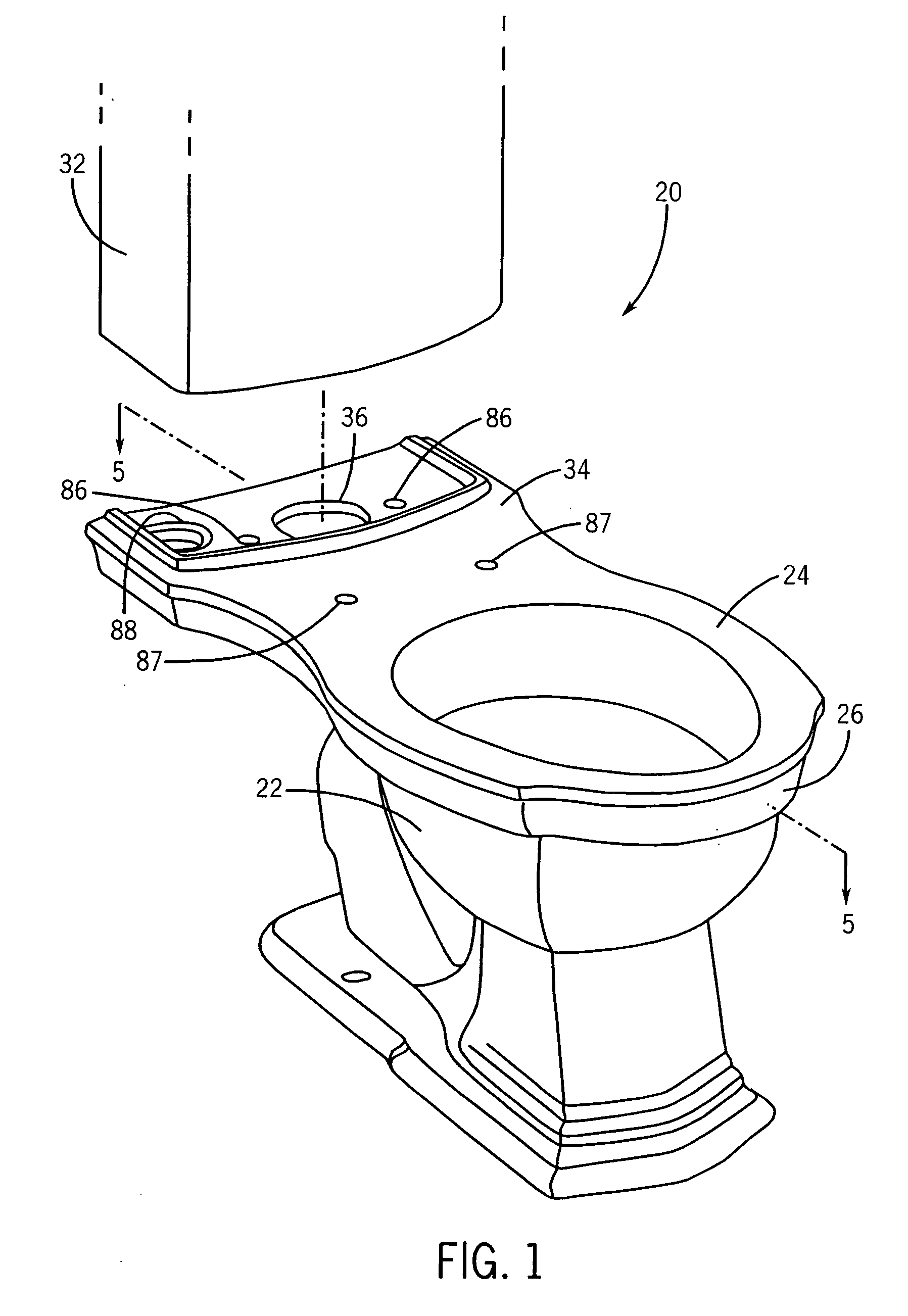Toilet with reduced water usage
- Summary
- Abstract
- Description
- Claims
- Application Information
AI Technical Summary
Benefits of technology
Problems solved by technology
Method used
Image
Examples
Embodiment Construction
[0040]Referring now to the drawings, and more particularly to FIGS. 1, 4A, 4B and 5, there is shown a toilet 20 which includes a bowl 22 with a rim 24 at an upper extent 26 of bowl 22. Rim 24 has a rim channel 28 therein. Bowl 22 can be conceptually considered to have a central vertical plane 30.
[0041]There is a water tank 32, which may have the usual internal flush valve, flush actuator and other fittings as are required (not shown). Alternatively, toilet 10 can be a tankless design which is directly connected to line water pressure via a Flushometer type valve (also not shown). Bowl 22 discharges into a trap and drain line (also not shown).
[0042]A rear extension 34 can extend from rim 24. It includes a water distributor structure 36 which is in communication with both the water supply and three exit channels 38, 40 and 42. The exit channels in turn are in fluid communication with the rim channel 28. Channels 38, 40, 42 extend at corresponding angles 46, 48, 50 respectively. Each o...
PUM
 Login to View More
Login to View More Abstract
Description
Claims
Application Information
 Login to View More
Login to View More - R&D
- Intellectual Property
- Life Sciences
- Materials
- Tech Scout
- Unparalleled Data Quality
- Higher Quality Content
- 60% Fewer Hallucinations
Browse by: Latest US Patents, China's latest patents, Technical Efficacy Thesaurus, Application Domain, Technology Topic, Popular Technical Reports.
© 2025 PatSnap. All rights reserved.Legal|Privacy policy|Modern Slavery Act Transparency Statement|Sitemap|About US| Contact US: help@patsnap.com



